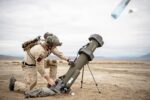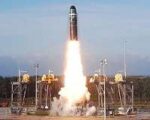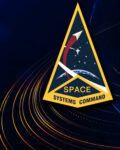The U.S. Space Force has officially renamed its “Front Door” initiative to the “Industry Engagement Enterprise” (IEE), reflecting a strategic shift toward deeper and more structured collaboration with the commercial space sector. The rebranding is not merely cosmetic—it aligns with a growing emphasis on accelerating dual-use technology adoption and streamlining acquisition pathways in an increasingly contested orbital domain.
From ‘Front Door’ to Strategic Gateway
Originally launched in 2021 under the name “Space Systems Command Front Door,” the initiative was designed as a centralized entry point for commercial companies seeking to engage with the U.S. Space Force (USSF). Its purpose was to demystify acquisition processes and offer a single interface for industry innovators—especially non-traditional vendors—to pitch technologies or capabilities relevant to national security space missions.
The newly named Industry Engagement Enterprise (IEE) expands this mandate by integrating multiple touchpoints across the Department of the Air Force’s space enterprise, including:
- SpaceWERX – The innovation arm leveraging AFWERX models for rapid prototyping
- Space Systems Command (SSC) Commercial Services Office
- Space Development Agency’s (SDA) industry outreach functions
This consolidation aims to reduce redundancy, improve transparency in requirements communication, and enable faster transition of commercial capabilities into operational use.
Operationalizing Commercial Integration
The IEE is not just about branding—it reflects an operational pivot toward treating industry as a strategic partner rather than just a vendor. As Lt Gen Michael Guetlein (then Commander of SSC) emphasized during recent engagements, “We must move from episodic engagement with industry to persistent collaboration.” This includes early-stage dialogue during capability definition phases and continuous feedback loops throughout development cycles.
The IEE will serve as both an online portal and a cross-functional team embedded across key USSF organizations. According to official statements from SSC’s Commercial Space Office, objectives include:
- Publishing clear problem statements and technical needs
- Hosting regular Industry Days and reverse industry briefings
- Accelerating Other Transaction Authority (OTA) use for prototyping
- Aligning Small Business Innovation Research (SBIR/STTR) topics with operational gaps
This structure is intended to support Secretary Frank Kendall’s broader Department of the Air Force priorities around acquisition reform and digital modernization.
A Crowded Orbital Theater Demands Agility
The rebranding comes amid rapidly evolving threats in space—ranging from kinetic anti-satellite weapons demonstrated by China and Russia to cyber intrusions targeting satellite ground stations. To counter these threats while maintaining technological superiority, USSF leaders are increasingly turning toward agile procurement mechanisms that tap into Silicon Valley-like speed.
Commercial firms now provide critical capabilities across ISR (e.g., synthetic aperture radar constellations), communications (e.g., proliferated LEO), launch services (e.g., responsive launch providers), and SSA/SDA tools powered by AI/ML algorithms. The IEE seeks to integrate these offerings more seamlessly into mission planning architectures like Joint All-Domain Command & Control (JADC2).
This approach mirrors similar shifts seen in other branches—such as the U.S. Army’s xTechSearch or Navy’s NavalX—which aim to democratize access for startups while preserving mission assurance standards.
Challenges Remain Around Classification and Bureaucracy
Despite its promise, the new IEE faces structural hurdles inherent in defense acquisition culture:
- Security classification barriers: Many promising commercial technologies cannot be evaluated fully without access to classified threat models or CONOPS data.
- Sustainment funding gaps: Even successful prototypes often stall due to lack of Program of Record transition funding.
- Cultural resistance: Some legacy program offices remain skeptical of non-traditional vendors lacking DOD experience or cleared facilities.
The IEE team is reportedly working closely with SAF/AQ leadership on policy updates that would allow more flexible contracting vehicles and clearer pathways from prototype-to-production under Middle Tier Acquisition authorities.
A Broader Ecosystem Vision Ahead of FY26 Budget Cycle
The timing of this rebrand aligns with early planning stages for the FY26 budget cycle—a crucial window where new programs can be shaped around modular architectures that accommodate commercial plug-ins. USSF officials have hinted at upcoming initiatives tied directly into IEE pipelines, including:
- A new tranche-based procurement model for tactical ISR satellites using open standards
- An expanded Commercial Augmentation Services framework akin to NASA’s CRS/COTS model but tailored for defense missions
- A classified version of SBIR Phase III pathways allowing direct award transitions without recompete risk
If successful, these efforts could position IEE as not only an engagement tool but also a foundational pillar in how future space architectures are conceived—modular by design, commercially enabled by default.
Conclusion: A Necessary Evolution Amid Strategic Competition
The renaming of Front Door into the Industry Engagement Enterprise signals more than branding—it represents institutional recognition that future U.S. space dominance depends on dynamic public-private collaboration. As adversaries accelerate their own military-civil fusion strategies in orbit, USSF must leverage America’s innovation base at speed if it hopes to maintain deterrence credibility across all orbital regimes—from LEO through GEO and cislunar operations.









